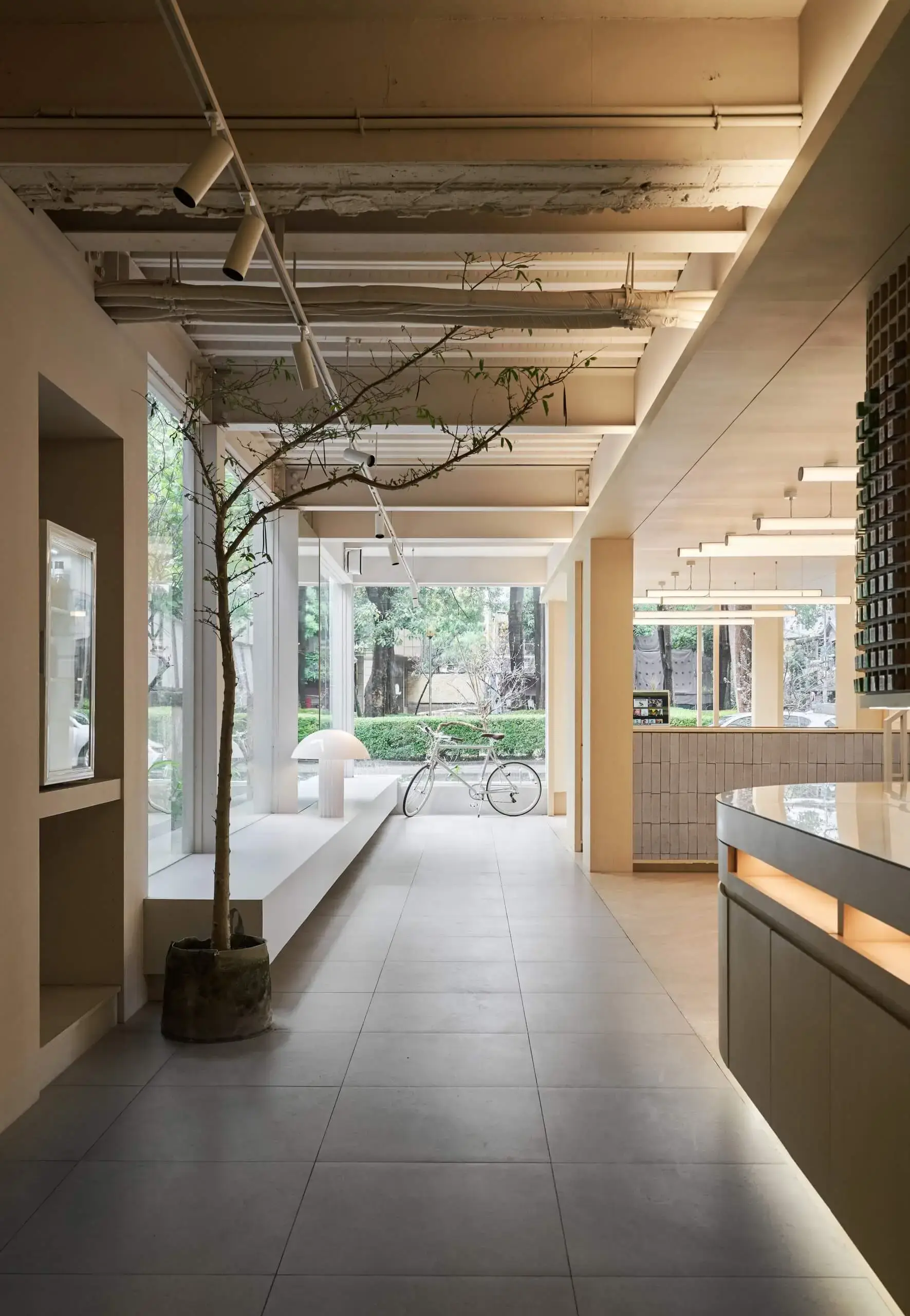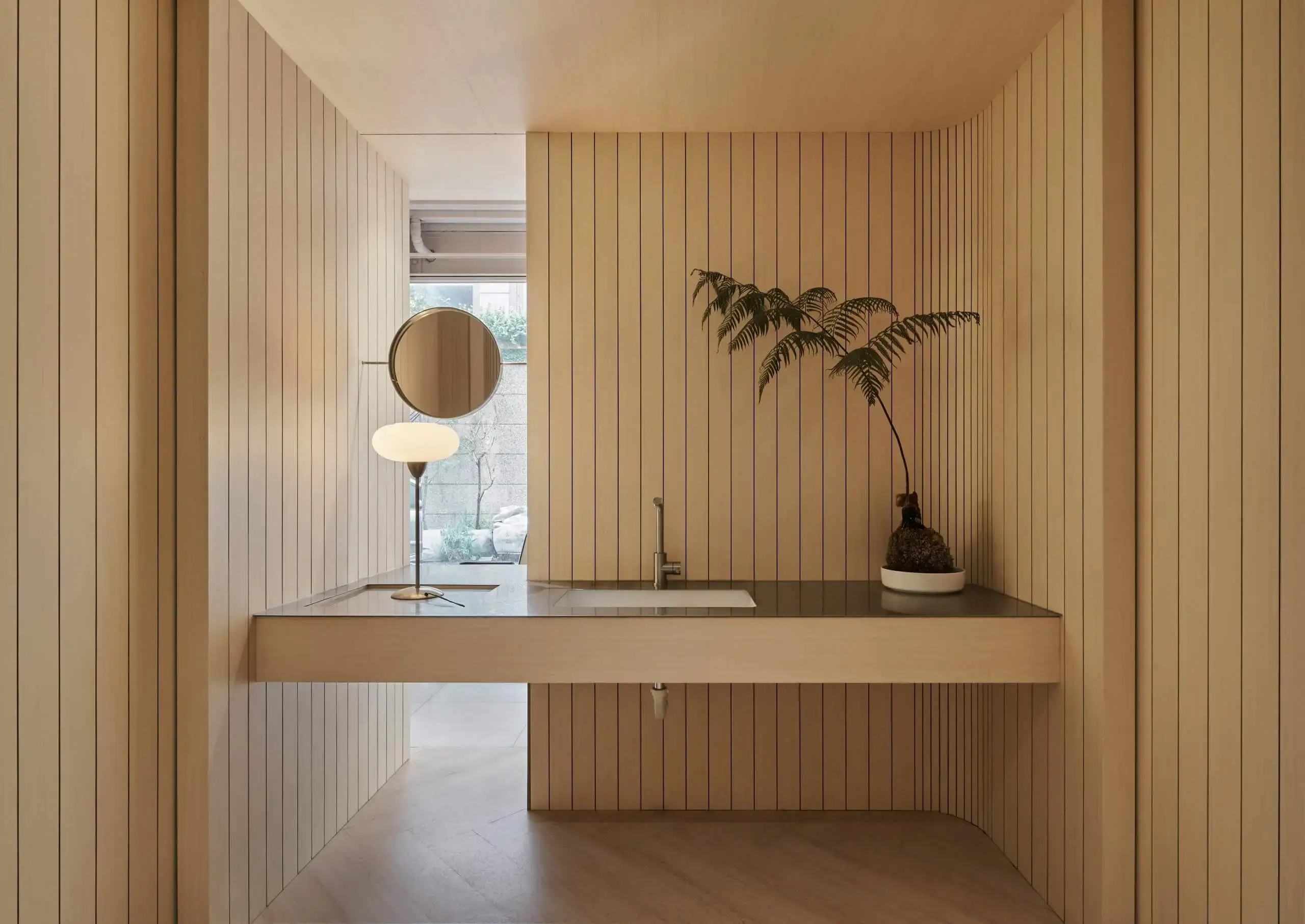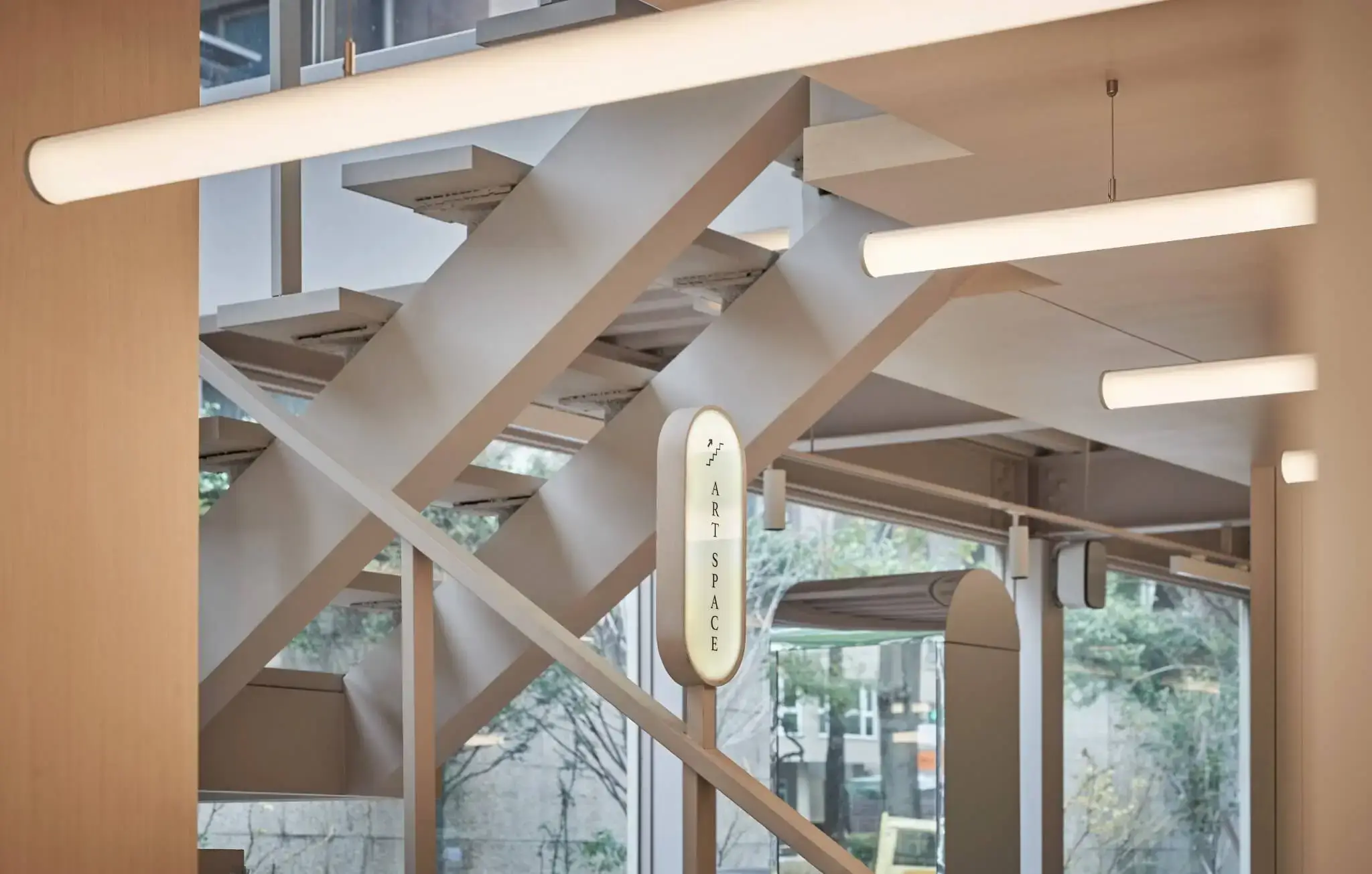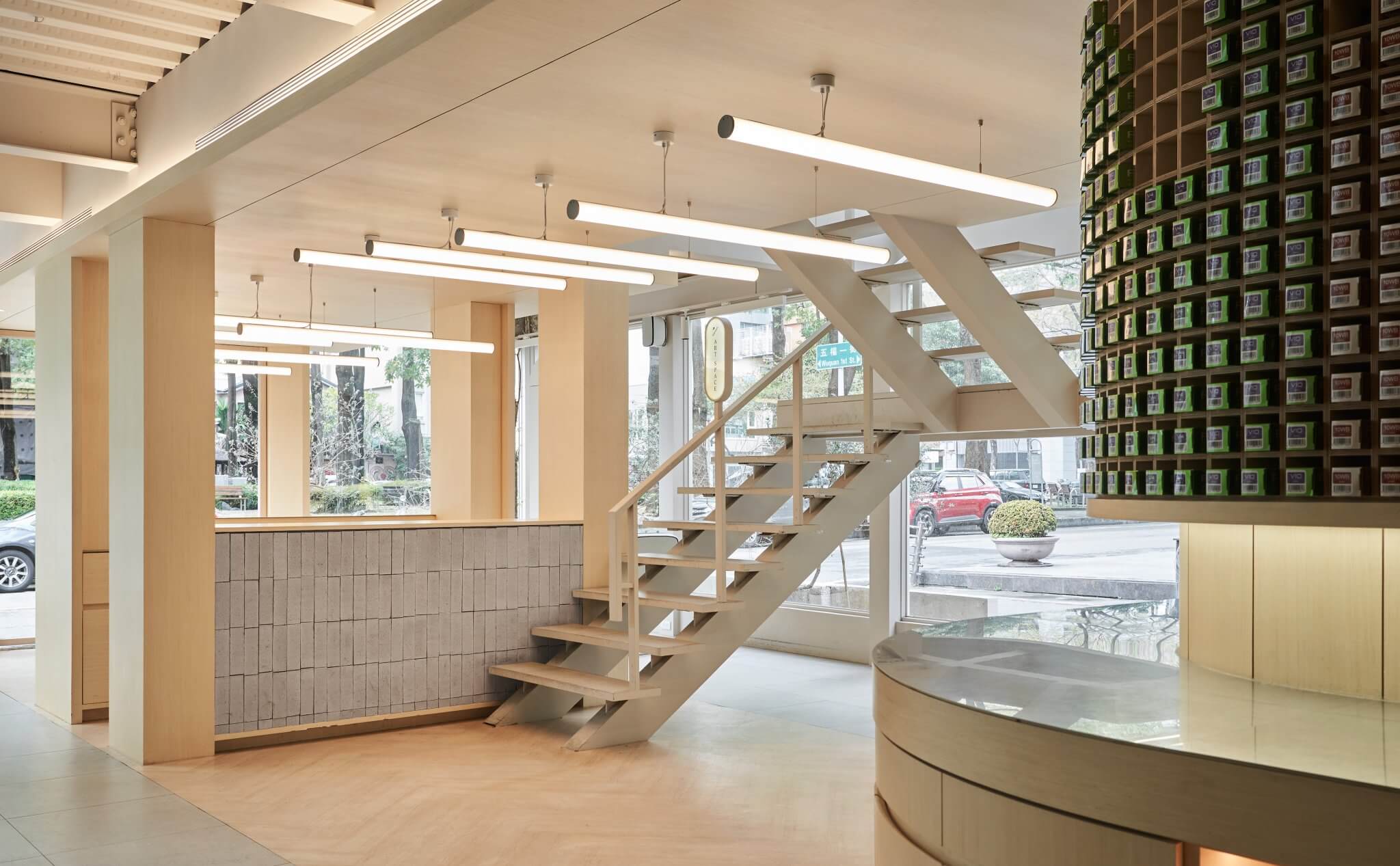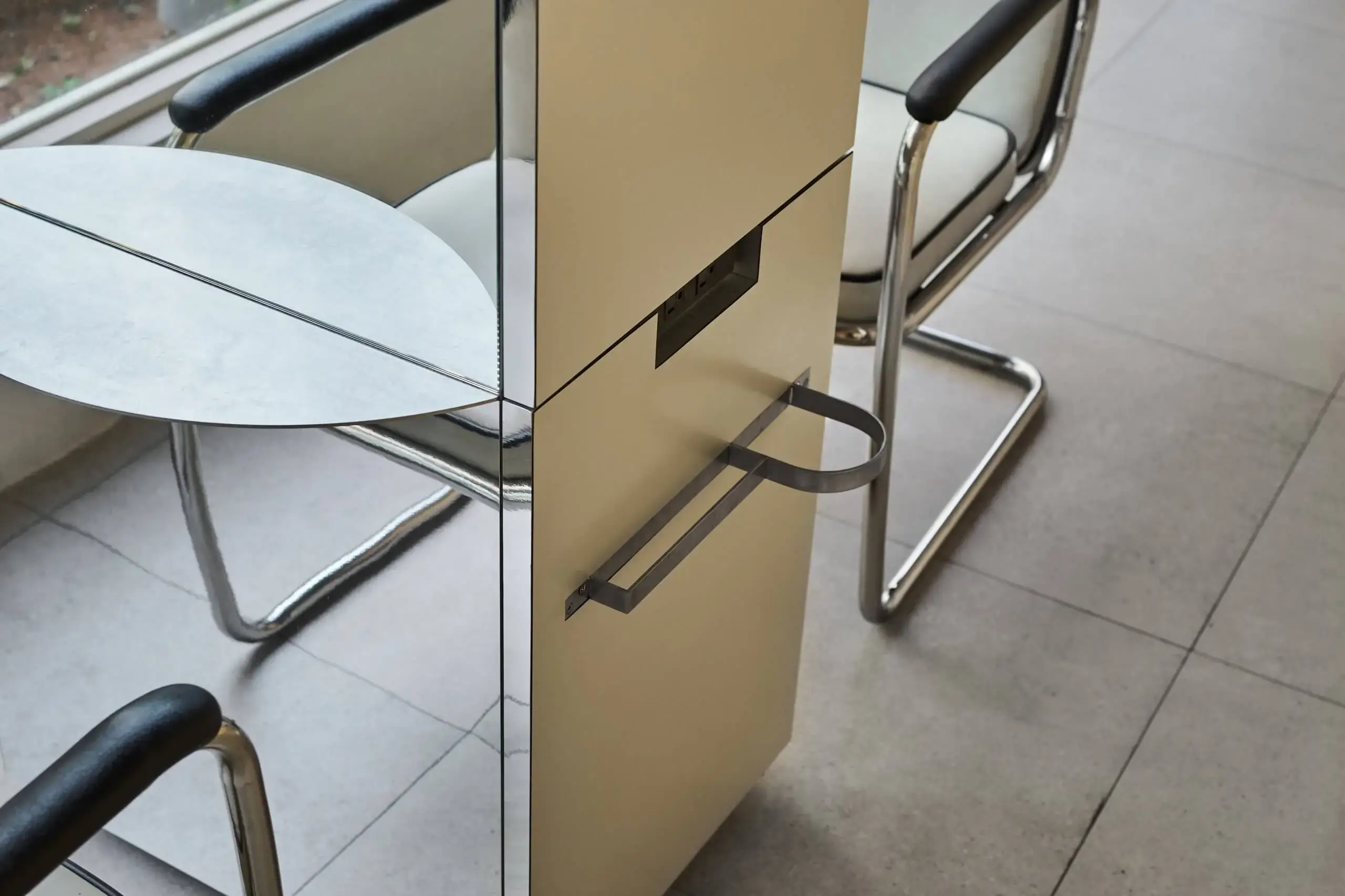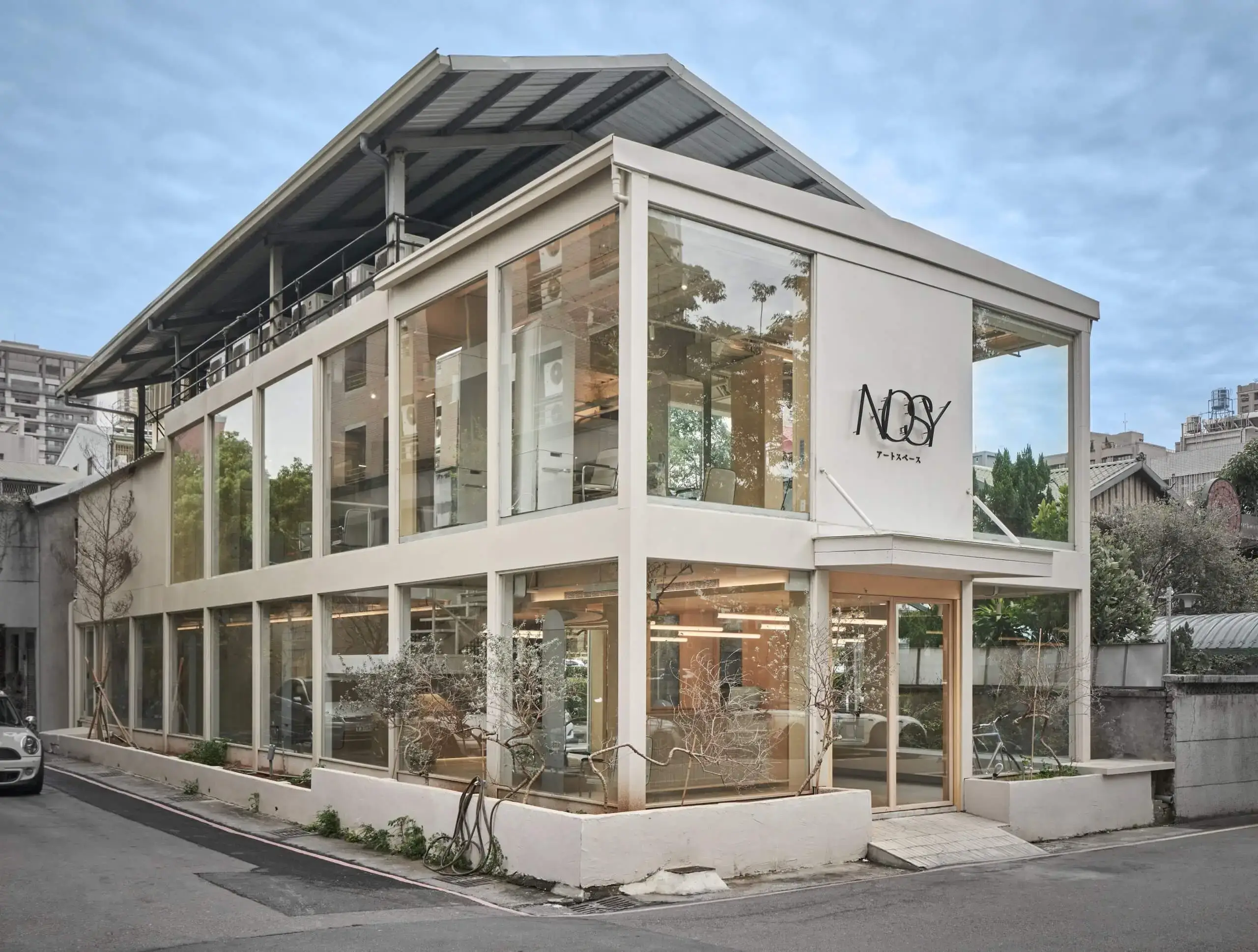
美髮沙龍的造型現場,其實是一場秀,是造型師與顧客的即時秀場,剪髮、染膏調色、為頭髮上色、吹整的過程,宛如迷人即時表演,於是,我們把美髮沙龍空間搭造成舞台,將設計現場忠實呈現。
Doing styling at a hair salon is actually a live show presented by stylists and customers. It is like a fascinating live performance involving hair cutting, dye color mixing, hair coloring, and hair drying. Therefore, we turned the hair salon into a stage to authentically demonstrate how design happens.
延續既有的建築結構,我們打開原本封閉的牆體,以玻璃為立面凸顯鋼骨構造也接續地景,創造一個內外連結、視覺相通的建築空間,為室內舞台創造最佳能見度。
In continuation of the existing building structure, we opened up the closed walls. The glass façade not only highlights the reinforcing bar structure, but also continues the landscape, creating an architectural space that visually connects the inside and the outside, providing the best visibility of the indoor stage.
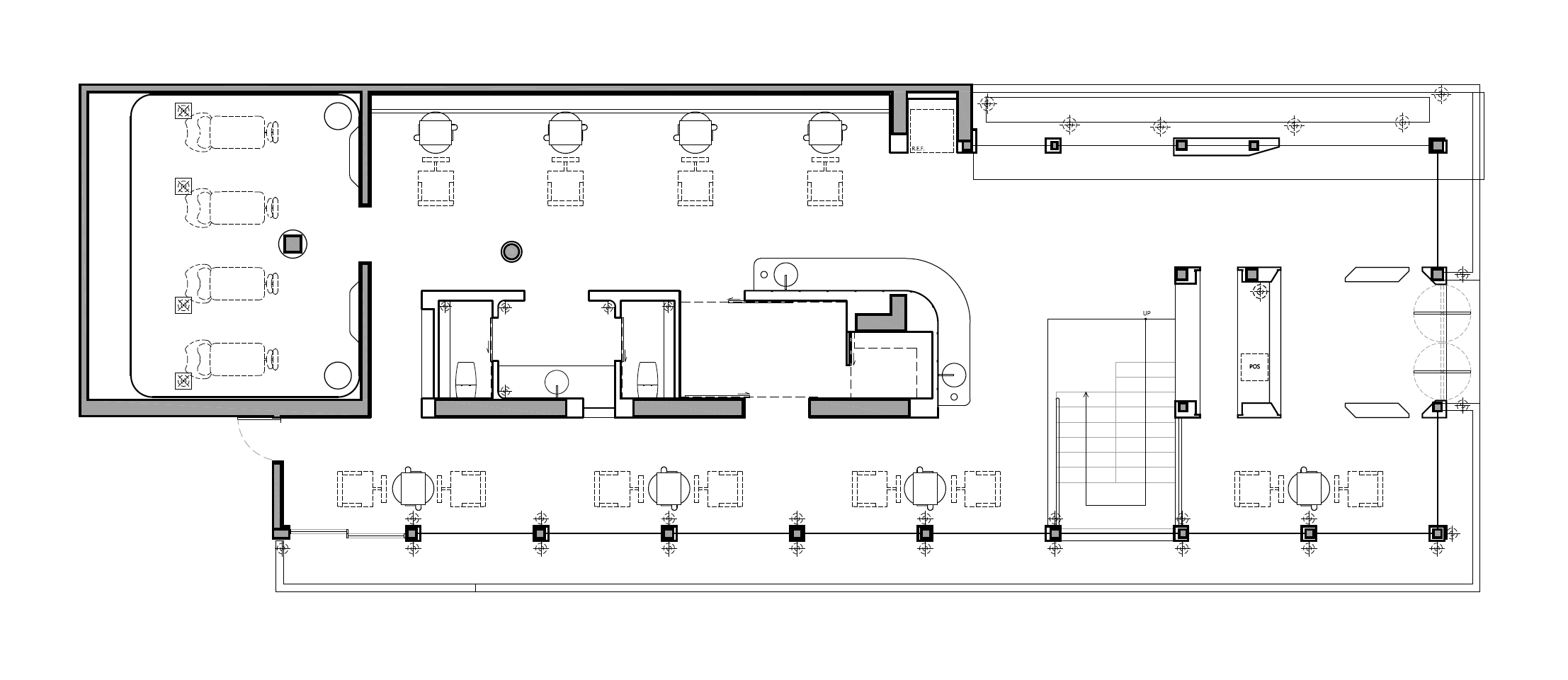
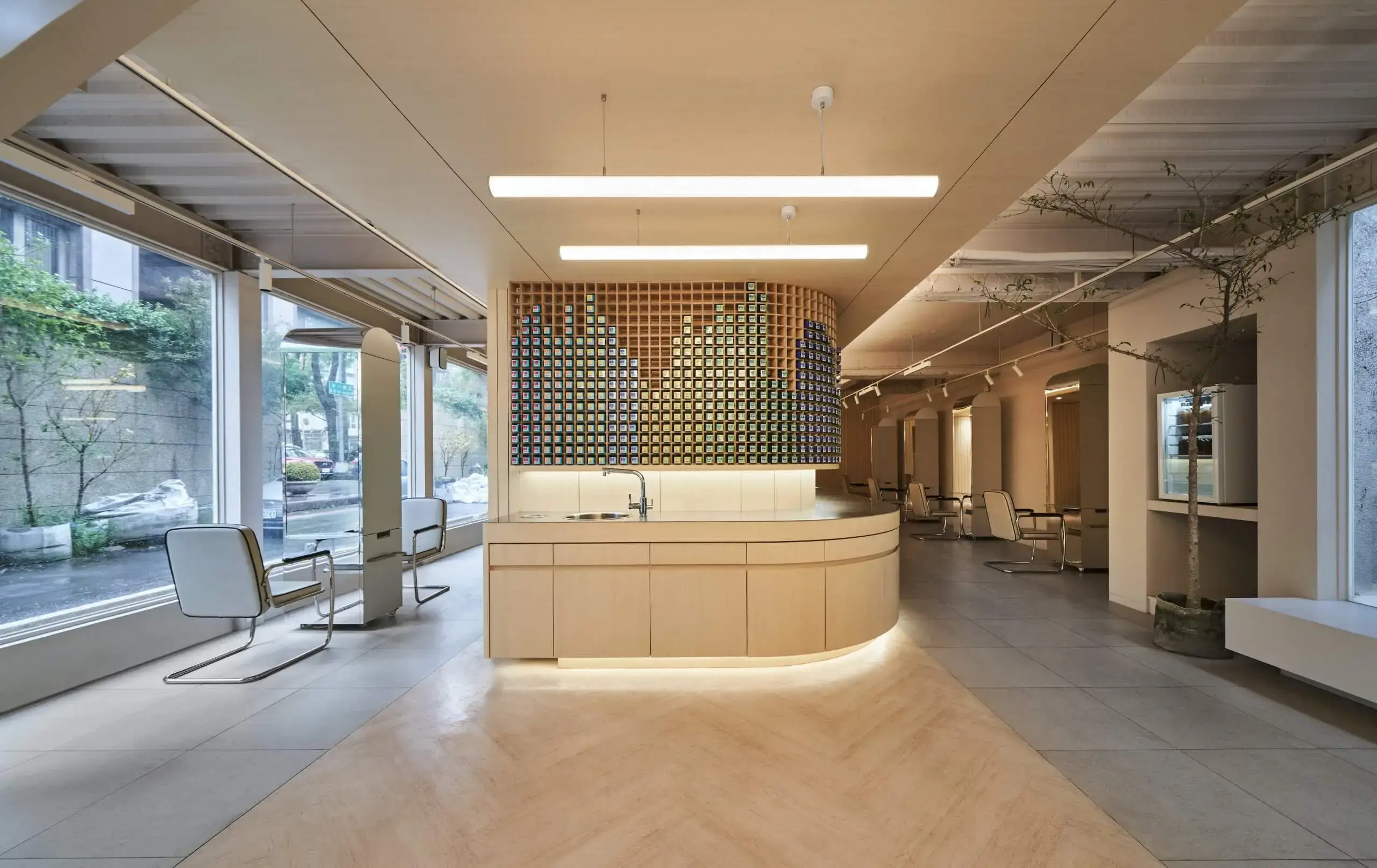
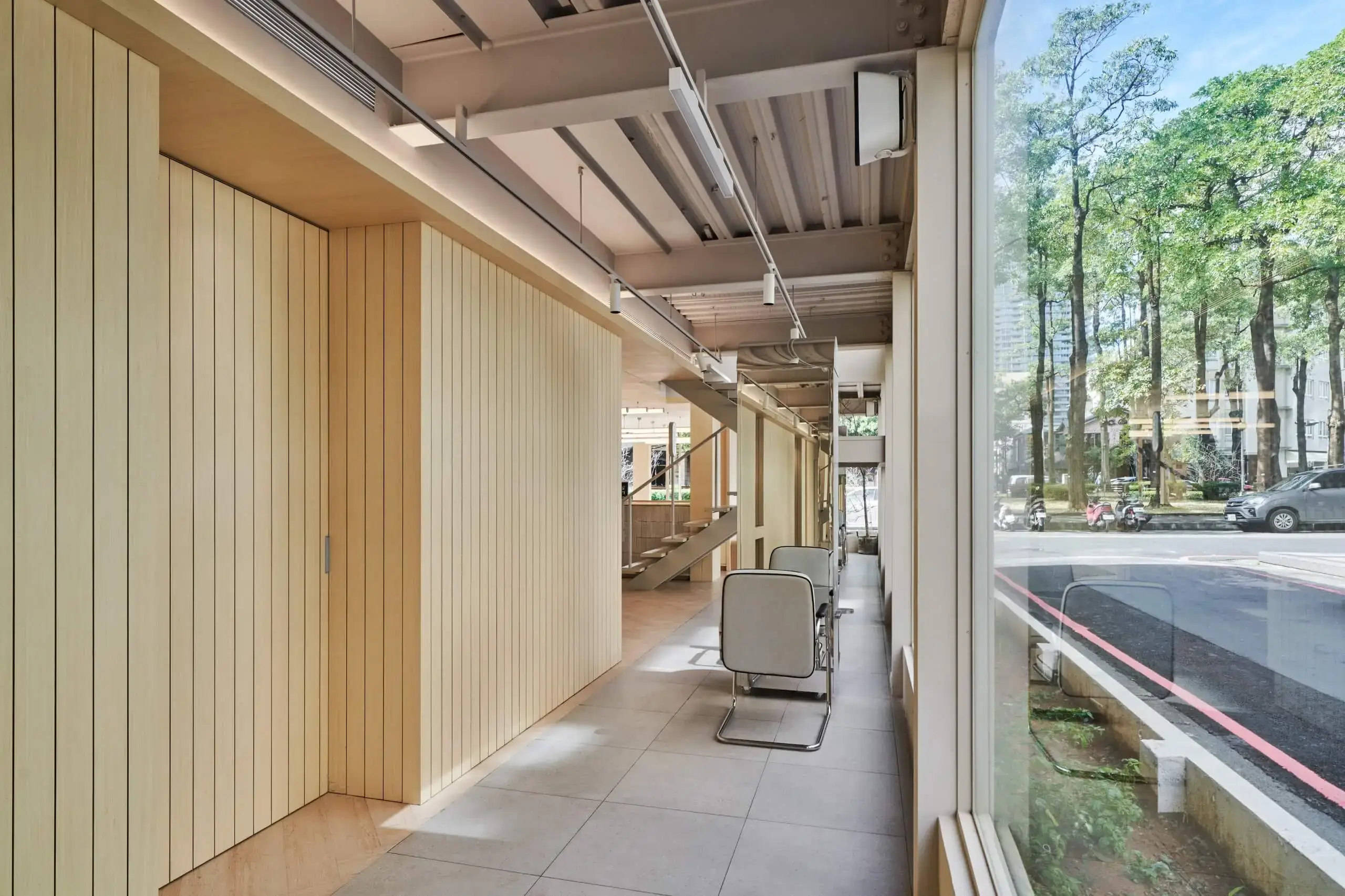
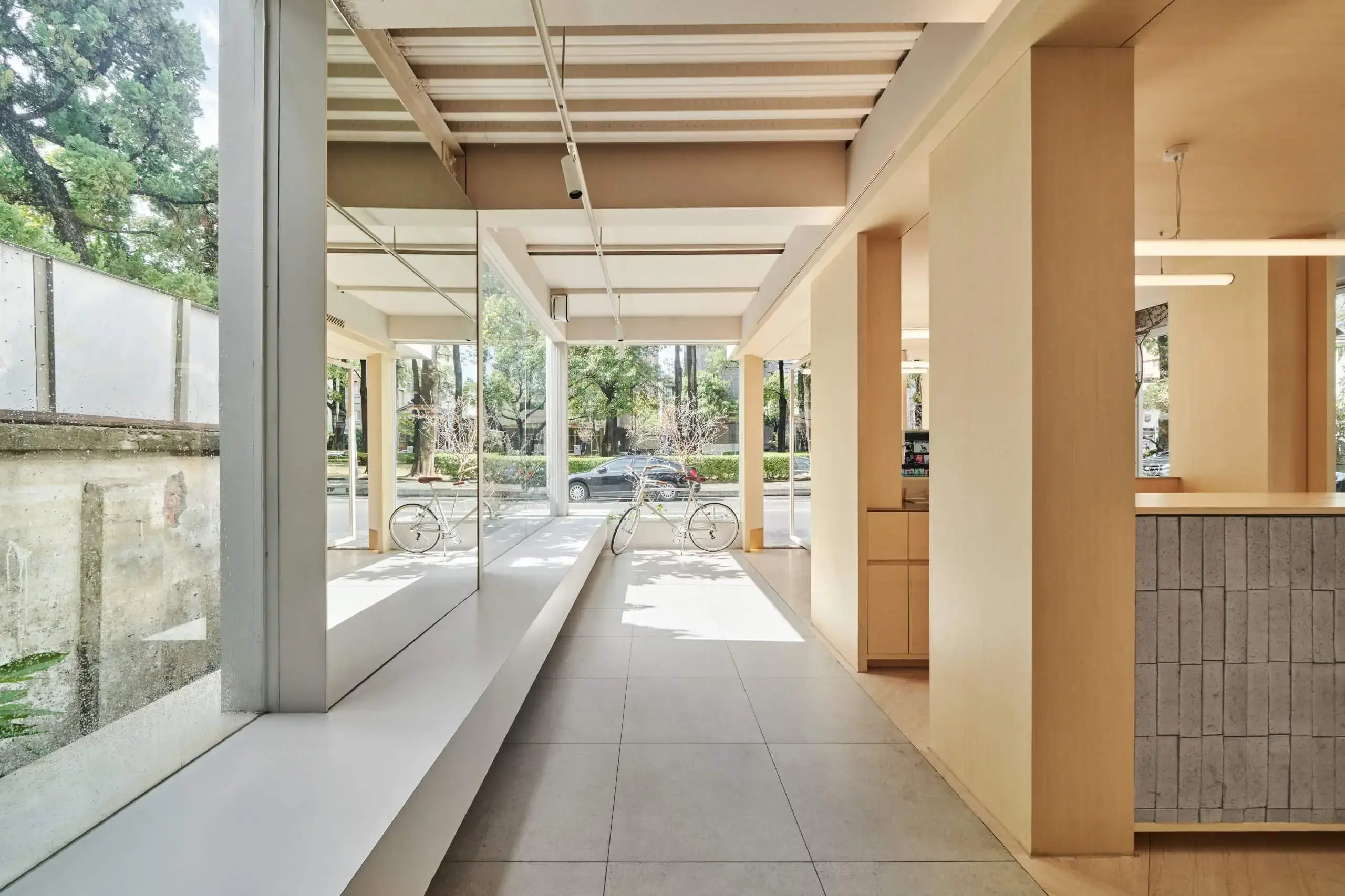
利用基地縱深長的特點,切出三段長向軸線,深長的線性軸線宛如鎂光燈聚焦的伸展台,隱喻Runway的空間佈局,訴說美髮沙龍與時尚產業的緊密關係。同時藉由天頂不同的材質,定義空間屬性,由接待櫃檯往後延伸的中央軸線,整合了Mini Bar、染膏工作台、設備室與盥洗室,定位為服務空間;左右兩側的鋼構天花廊道為造型工作區,而這一排臨窗的位置,將會是造型師大顯身手的表演現場。
We took advantage of the long base and separated it with three long axis lines. The long linear axes form like a spotlighted runway, implying the spatial arrangement of runways and conveying the close relationship between the hair salon and the fashion industry. In addition, the functions of the space are defined according to ceiling materials. The central axis, extending backward from the reception counter, integrates the Mini Bar, dye station, equipment room, and toilet, which are positioned as a serving space. The aisles with a steel ceiling on both sides serve as a styling area, and the window-facing seats will be where the stylists play their full roles.
特意在空間置入一座亭作為接待櫃檯與迎賓軸線,形成玻璃建築內的屋中屋,木質調的亭跟繽紛的染膏陳列牆,柔軟冰冷的鋼骨結構,平衡基地的深邃感跟粗獷感,同時保有不被一眼望穿的隱私性。
A pavilion is deliberately placed in the space as a reception counter and a guest welcoming axis, like a house in the glass building. The wooden-tone pavilion, colorful dye display wall, and soft but cold steel structure balance the depth and roughness of the base while maintaining privacy to prevent the building from being seen through.
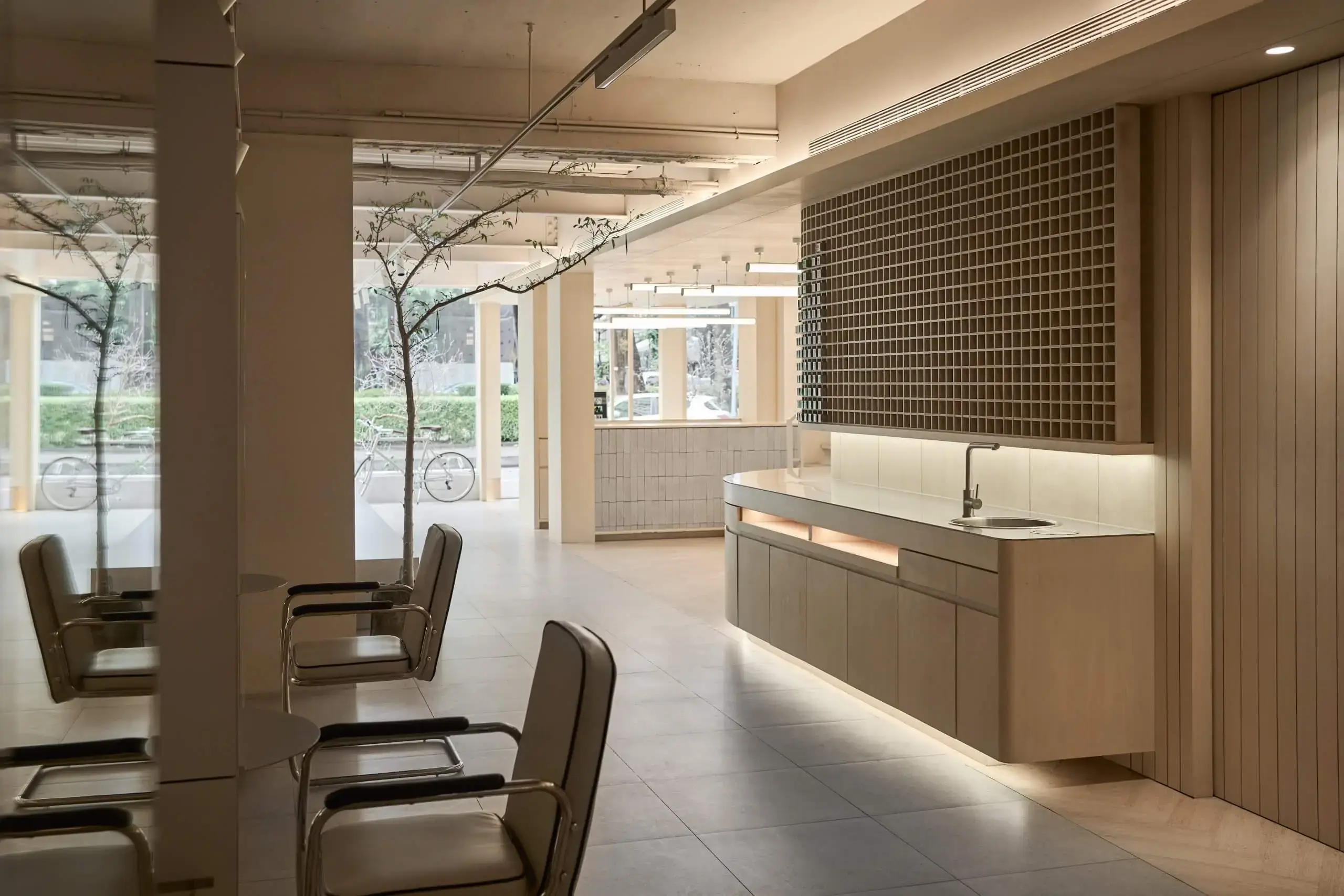
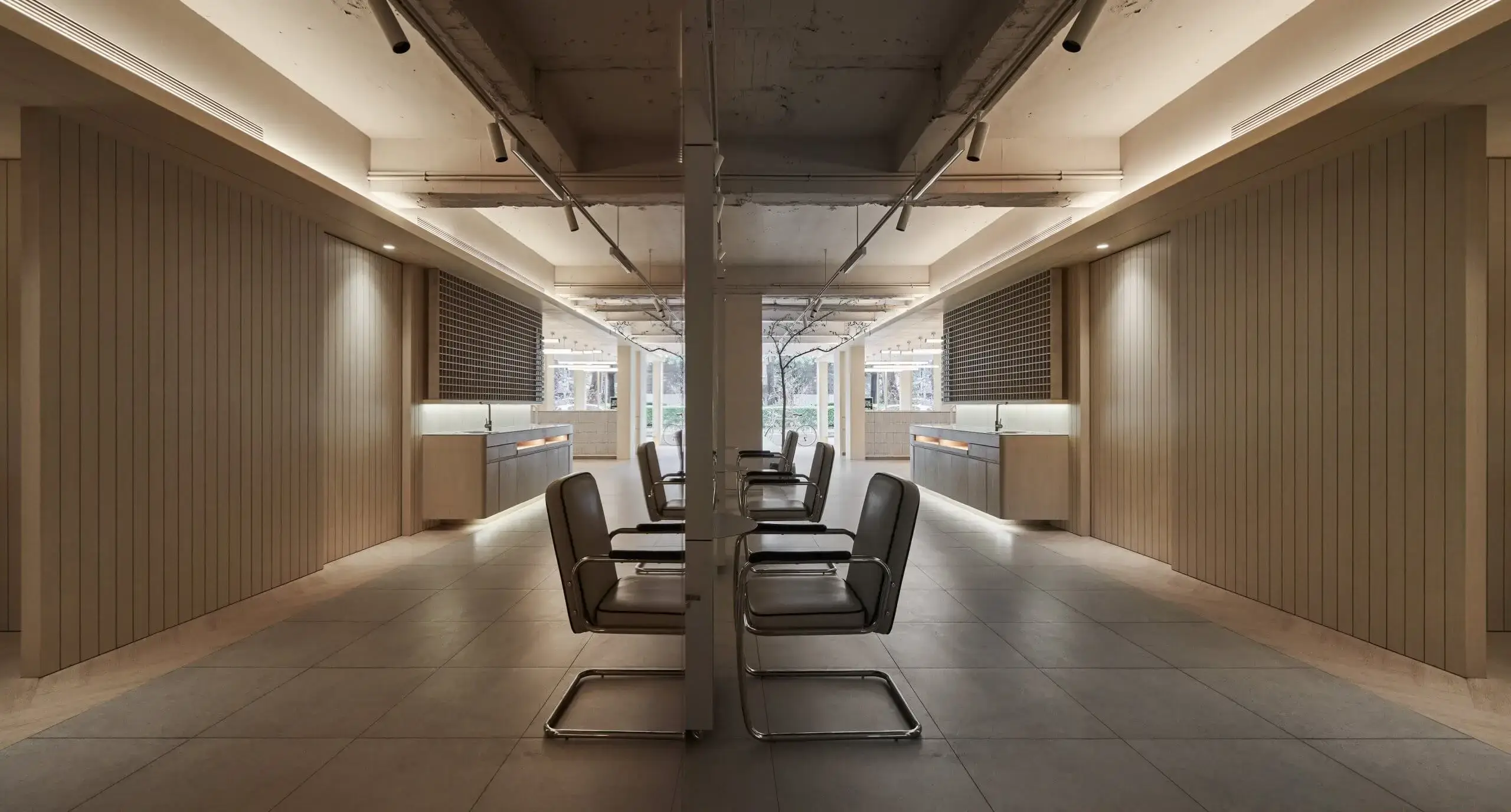
需要高隱蔽的洗頭區跟盥洗室,被安置在空間底端,強化使用者心境的安定。躺洗室以礦物塗料及拱型天花塑造洞穴空間,靜謐沈澱的氛圍撫觸使用者情緒,透過高包覆性的環境隔絕外部紛擾,讓空間回到歇息放鬆的使用情境。並利用既有圓柱作為空間的停頓點,在長廊底端界定並暗示空間的服務機能座標。
The shampoo area and toilet that require high privacy are set at the bottom of the space to further comfort the users mentally. The backwash room is a cave-like space painted with mineral paint and features an arched ceiling. The quiet and peaceful atmosphere helps soothe the emotions of the users. The outside noise is isolated from the highly enclosed environment, allowing the customers to rest and relax. With the existing columns as pause points in the space, the shampoo area and toilet at the end of the corridor also define and imply the service function of the space.
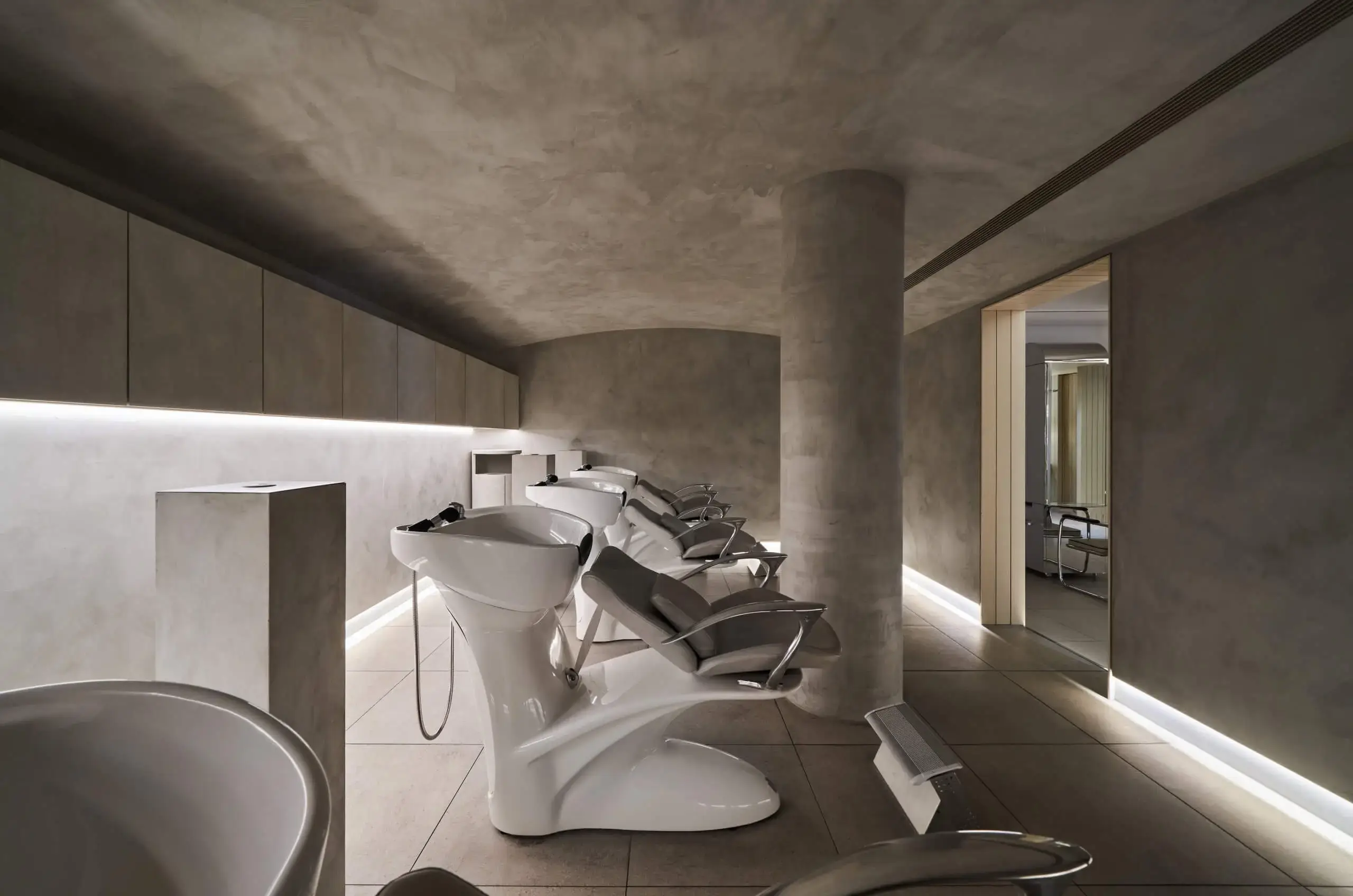
空間的機能與佈局也隨場域的目的性做切換,一樓為主要顧客服務區,各種機器設備頻繁使用,故在空間中心點安排設備倉庫,左右均設置開口,可同時服務兩側,高效的動線規劃提高工作人員的使用效率。二樓被設定為多功能教學課程的場域,將高機動性做為設計目標,在開放式空間置入可移動鏡櫃工作檯,提供更俐落的使用環境。
The functions and arrangement of the space change based on purposes. As the main customer service area is on the 1st floor where machines and equipment are used frequently, an equipment warehouse is located at the center of the space. It has an opening on its left and right sides in order to serve the customers on both sides. Such efficient circulation planning improves the efficiency of workers. The 2nd floor is used as a multifunctional teaching space designed to deliver high mobility. Mobile styling stations with mirrors are placed in the open space to provide a more flexible to use environment.
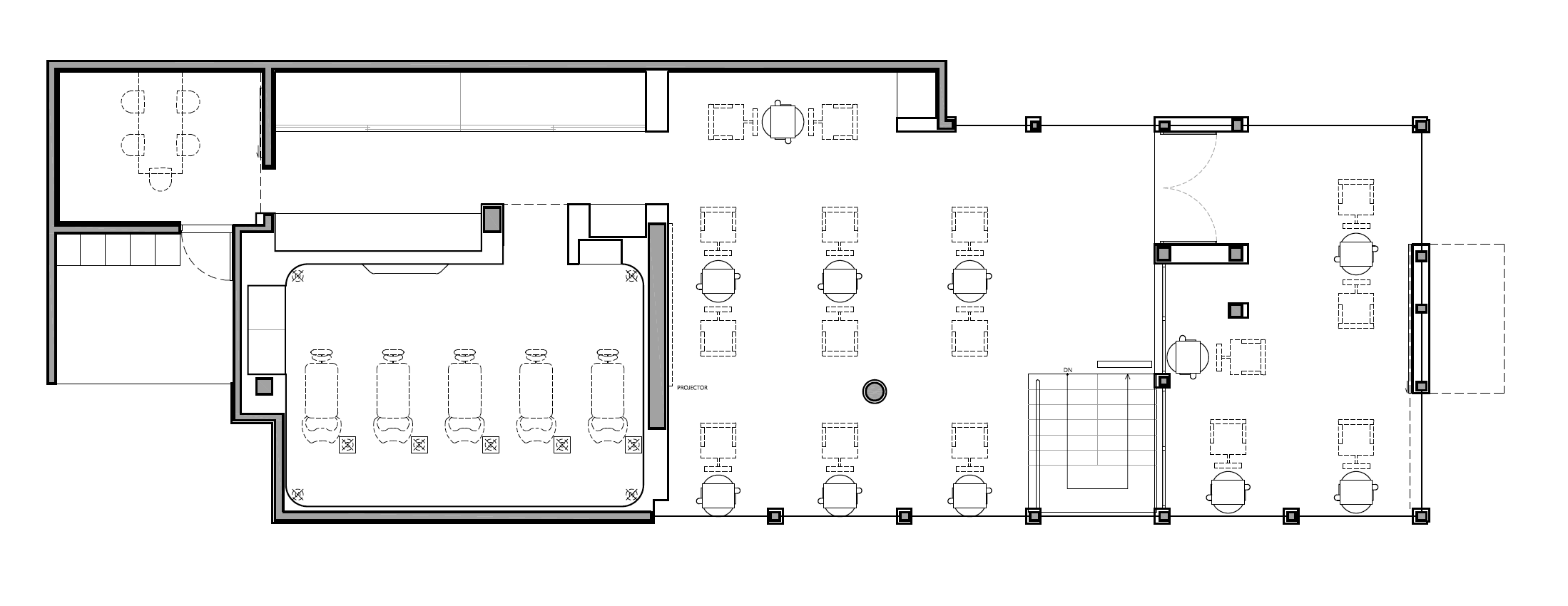
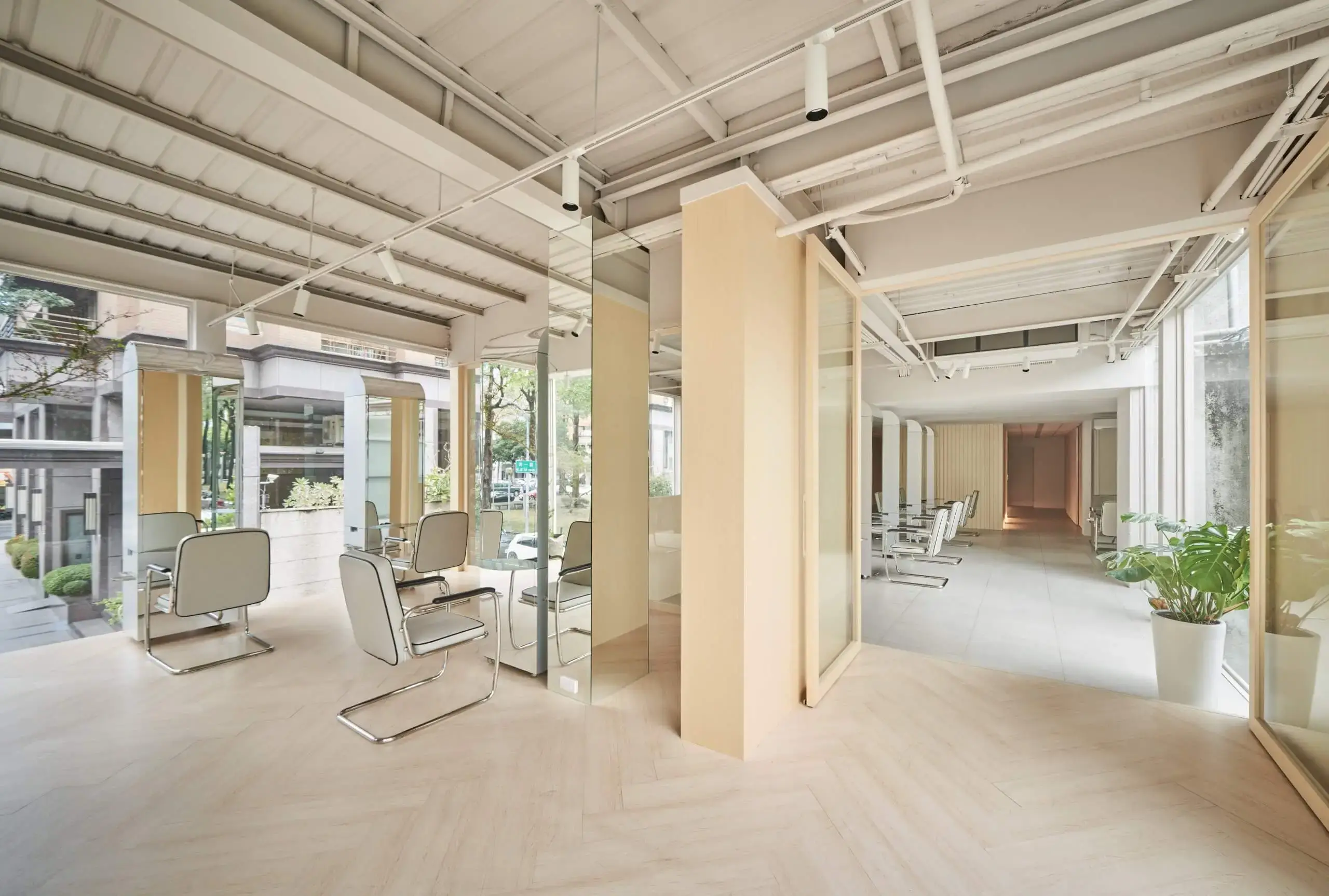
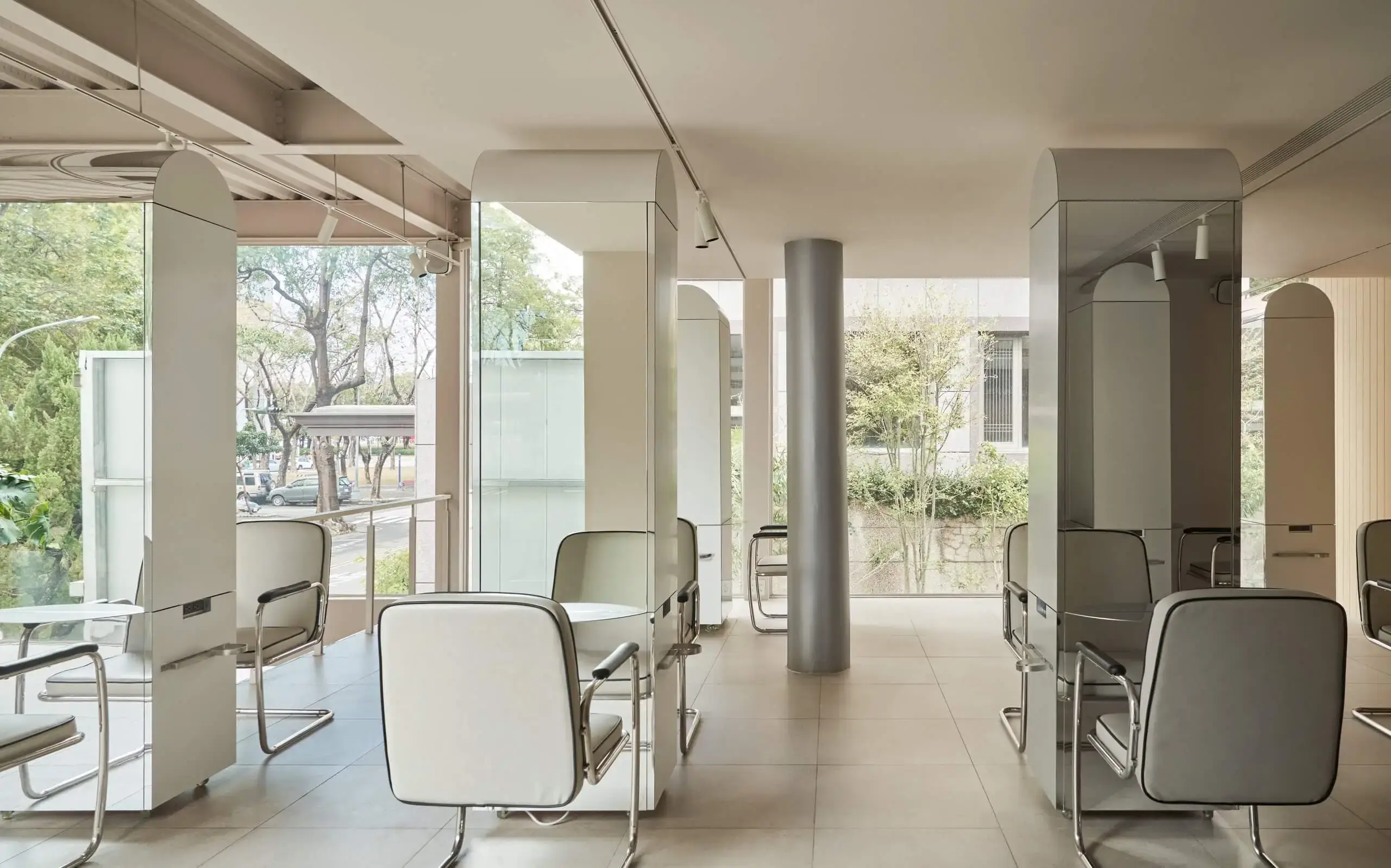

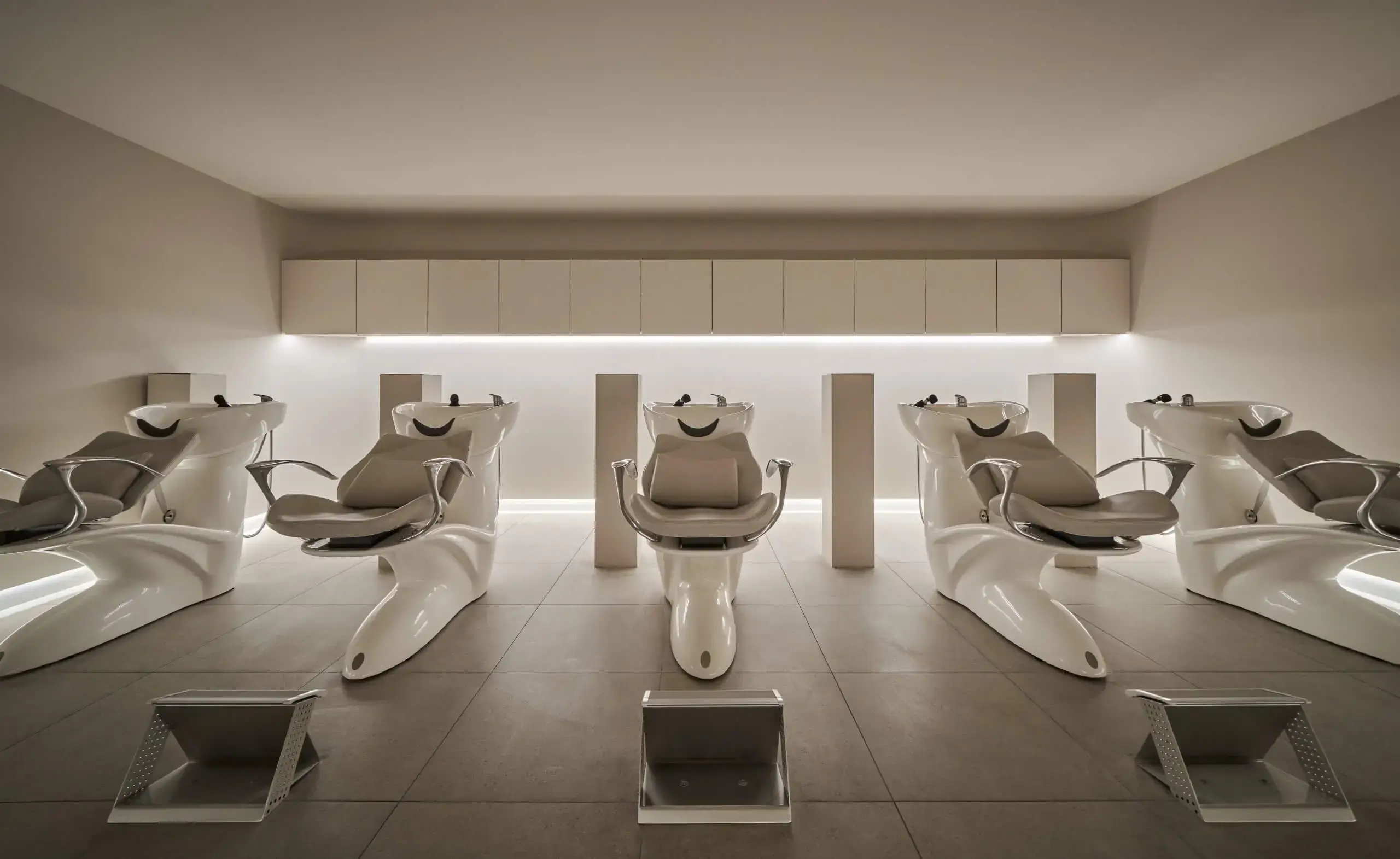
我們在此案融合建築手法,順應建築紋理進行空間的暗示與基地優勢的放大,透過空間的精神性強化時尚產業連結印象,以此闡述美髮產業的價值。藉由空間傳達替品牌塑造形象、締結與消費者的質感對話之餘,亦關照使用者需求,為空間使用者創造好用、便利的工作環境,回到設計的最初目的。
In this project, we combined different architectural techniques to offer spatial cues and draw more focus on the advantages of the base in line with the architectural texture. The spirituality of the space enhances the impression that the space is tied to the fashion industry, thereby elaborating the value of the hairdressing industry. Apart from building a brand image and allowing for a textured conversation with the consumers through spatial communication, we created a user-friendly and convenient working environment based on the needs of the space users, consistent with the very first purpose of the design.
